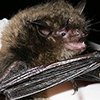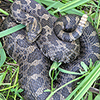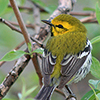Conservation Science
Protecting Pennsylvania's Plants and Animals
Species at Risk:
Freshwater Mussels
Nestled among the rocks in the river bottom, freshwater mussels silently filter the particles from the waters of lakes, streams and rivers. They remove the silt and attached nutrients, clarifying the water and reducing particles which can cause pollution. Unfortunately, freshwater mussel populations have declined throughout Pennsylvania. WPC is working hard on the conservation of this imperiled group of invertebrates and their habitats.
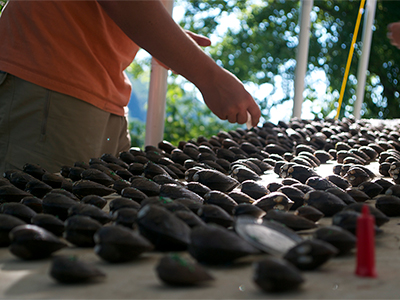
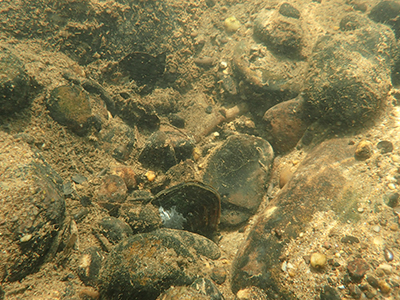
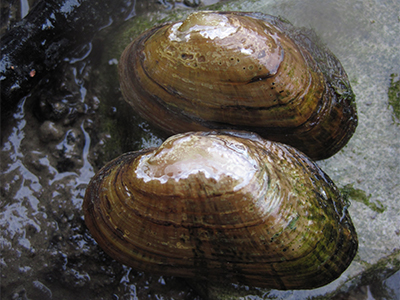
Mussels at Risk
In North America, two-thirds of roughly 300 freshwater mussel species are imperiled, vulnerable or extinct. Ninety-five mussel species are classified as threatened or endangered under the U.S. Endangered Species Act, including 10 in Pennsylvania.
The North American trend of declining mussel populations is mirrored in Pennsylvania. Of Pennsylvania’s 67 freshwater mussel species, 12 are considered state or federally endangered or threatened and another 13 have not been observed in Pennsylvania waterways for decades. While some species are relatively widespread, there are indicators that even these populations may be in trouble.
For instance, some populations consist primarily of older individuals with little evidence of reproduction, suggesting these populations could eventually die out. Observed declines coupled with new conservation tools makes proactive conservation efforts even more important to the long-term survival of these unique and imperiled freshwater mussel populations.
Threats
It’s no surprise that human activities often degrade the quality of freshwater habitats in the United States. These activities often directly impact the survival of freshwater mussel populations. Impoundments, invasive species, dredging and channelization, pollution from industry, urban and agricultural runoff, absence of fish hosts and habitat destruction are all culprits to the decline in populations.
Biologists at the Pennsylvania Natural Heritage Program investigate freshwater mussel habitats throughout the state to provide information about species distributions, habitat associations, rarity and population trends that is necessary for effective management. Data from surveys and models of species habitat are used to evaluate the trends for freshwater mussel populations of conservation concern.
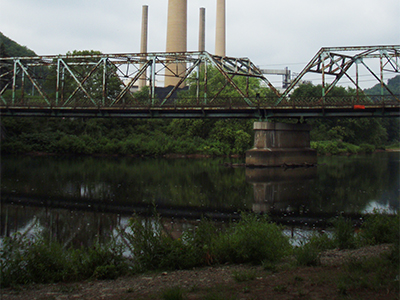
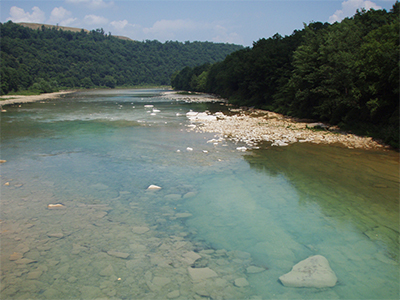
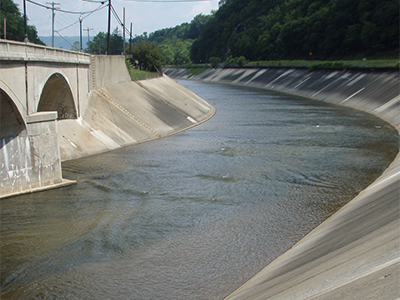
Research and Conservation
Ohio River Navigational Pools
To gain an understanding of the natural resources of a large river with many human influences, WPC set out to survey the Ohio River’s freshwater mussels.
The upper river drains a 23,500 square-mile watershed in Pennsylvania, New York and West Virginia. Its basin encompasses diverse urban, agricultural and natural landscapes. Once a river of flowing riffle and runs dotted with islands, the Ohio River was converted to slow, deep pools when the navigational pools
were created in the late 19th century. Since the industrial revolution, the river has received pollution from resource extraction (e.g., coal mining and timber), manufacturing (e.g., steel, glass and other materials) and storm water. Additionally, the river is also a route for the transport of goods. Barges buzz through the locks and dams, moving coal and other materials every day of the year.
Despite past and ongoing threats, the river has experienced improvements in water quality since the peak of industrial pollution. While many assume that there is little life in the deep, silty waters of the river, recent studies of fish indicate that the river is recovering.
Because mussel communities in the Ohio River are still under-surveyed, divers from the Pennsylvania Natural Heritage Program don SCUBA gear and descend to transect lines on the river bottom. Feeling for shells in the top layer of sediments and looking for the telltale shape of mussel siphons, divers pull up freshwater mussels from the sandy river bottom.
Mussel diversity, habitat preferences of species encountered and evidence of population recruitment are useful for managing the river’s resources. Information from surveys and distribution modeling about the freshwater mussel communities, particularly any discoveries of species not seen in the river in recent decades or those that prefer high-quality habitat, are also beneficial to the management of the river.
A survey of Pennsylvania’s portion of the Ohio River produced data that informed local management as well as an Ohio River basin mussel species distribution model. The model analyzed the relationships between the landscape and watershed features with the occurrence of freshwater mussels. The results of species distribution modeling can be used to inform future targeted surveys and provide landscape-level insight into the factors that are related to and influence mussel habitat.
Brook Floater and Eastern Lampmussel Distribution
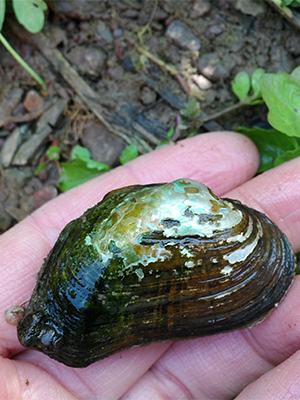
Updated species distribution data for two imperiled species, brook floater (Alasmidonta varicosa) and eastern lampmussel (Lampsilis radiata), was identified as a critical conservation need necessary to inform management of these mussels. PNHP biologists conducted extensive surveys, analyzed distribution data, and completed assessments of the species conservation status. The significant range decline and decrease in population sizes of the brook floater and eastern lampmussel suggest that these species are reaching a critical threshold for conservation.
In previous studies, PNHP biologists have failed to find brook floater and eastern lampmussel at many sites where they historically occurred. Rangewide, both species have documented habitat along the Atlantic Coast of the eastern United States but more information must be gathered to fully understand the extent of remaining habitats and threats to these mussels.
Project staff revisited historic locations and sites that had not been surveyed in years to search for brook floater and eastern lampmussel and determine where habitat remains for both species. We estimated population density and collected water quality and habitat information at survey locations. Distribution models for both species were developed to better understand the relationship between landscape characteristics and each species’ habitat. Information gathered from this project was applied to conservation status assessments.
Recovery of Mussels Populations
Recovery of Mussels Populations
Active mussel restoration is only possible because of years of PNHP partnership research and surveys. PNHP and its partners have documented species declines and river recovery following historical pollution, and identified areas with mussel recovery potential. Using this hard-earned information and taking advantage of some unique opportunities, PNHP and its partners have recently contributed to both large-scale species restoration and river recovery efforts.
PNHP staff is working with partners to stock pistolgrips (Tritogonia verrucosa) and round hickorynuts (Obovaria subrotunda) into locations where they have been extirpated. Recent recovery efforts through partnerships with the Pennsylvania Department of Environmental Protection, White Sulfur Springs National Fish Hatchery, and Pennsylvania Fish and Boat Commission have resulted in propagated animals being placed into the Allegheny River and Dunkard Creek. In another effort, PNHP is helping restore the state endangered salamander mussel (Simpsonaias ambigua) to its former range in the Ohio watershed. PNHP staff completed studies of its host, common mudpuppy (Necturus maculosus), in the large navigation channels of the Allegheny and Ohio rivers. The next phase of the effort will study the feasibility of restoring salamander mussel to the Ohio River with a field experiment to evaluate young salamander mussel survival in sites planned for stocking. The long-term goals are to recover freshwater mussel fauna extirpated by pollution and restore populations of mussel Species of Greatest Conservation Need.

